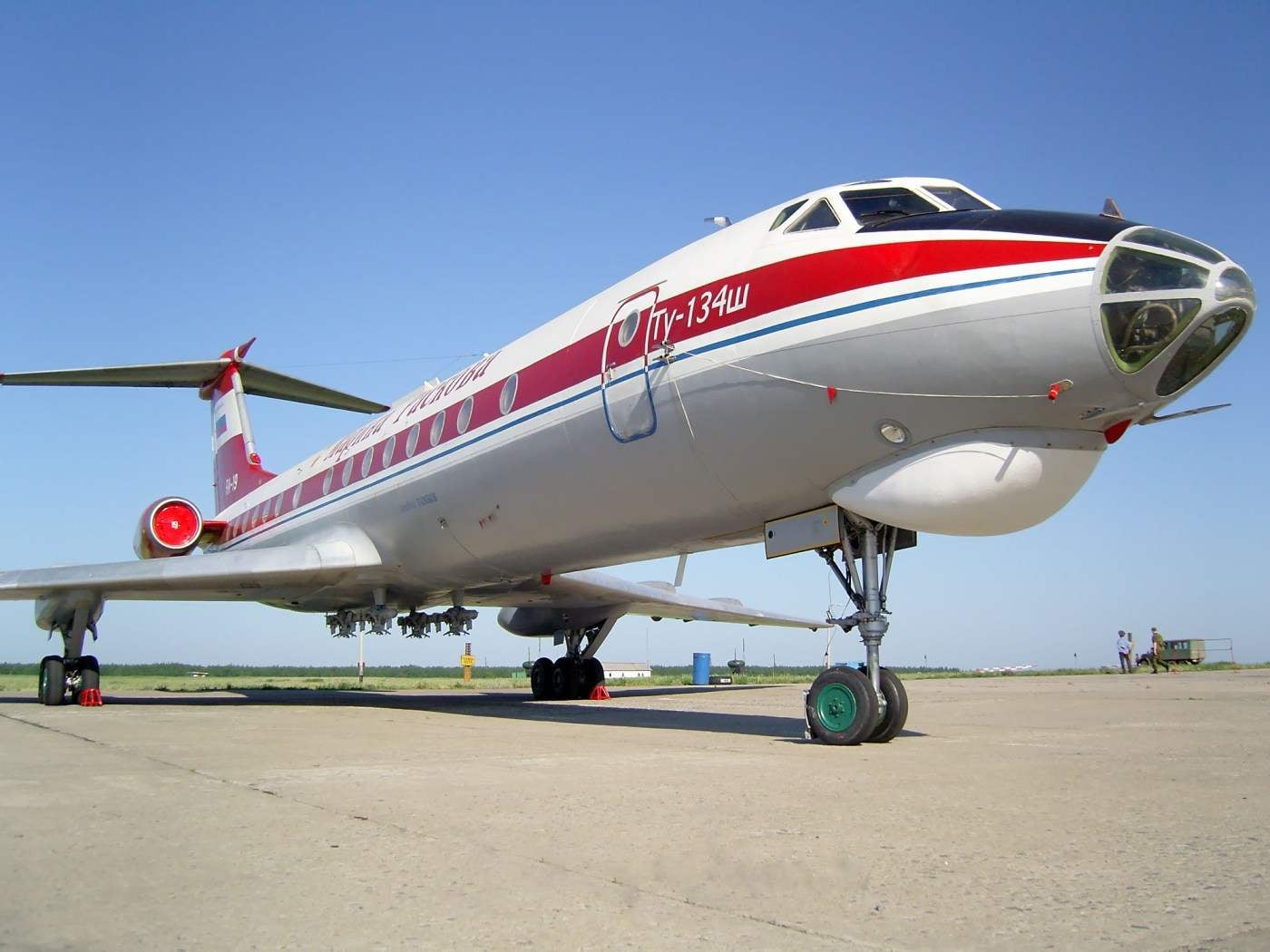The crews of Tu-134A-3, providing transportation of the Soviet military, was trained in the training regiments of both higher navigational schools. In addition, in the 46th of UAP produced from the personnel of the eight crew commanders (two in each squadron) approved for the transport of senior officers.
Tu-134Ш was considered a reliable machine and during the operation is seldom failed their crews. Until 1984 in the Voroshilovgrad higher military aviation school of navigators did not lose a single aircraft
“The trouble came, as tears to the eyes”: during the flight from the airfield Zhdanov training regiment may 25, 1984, was destroyed in the air at the altitude of 2750 m above the Proletarian district of Donetsk Tu-134Ш 46 ADF. Killed the crew experienced commander V. Syutkin and the only passenger — head of school the General-major of aviation Yu. Marchenko. The investigation showed, Tu-134Ш was manufactured in August 1972, he has flown since the beginning of operation 3173 hours and produced 2370 planting, and after the last planned repairs at Chelyabinsk aviaremzavod in November 1979 — still 1034 hours and 773 landing. 12 minutes of flight over the Donetsk, the aircraft, following in a given tier at a height of 4200 m, were in severe atmospheric conditions: enhanced turbulence with strong vertical gusts and overloads, greatly exceeding not only the maximum permissible performance, but also design, the result of which was the destruction of the structure. Studying of records “black box” in Rostov scientific research Institute of operation and repair of aviation technique showed that the angles of deflection of the rudder from the point of view of intelligent behavior of an experienced pilot and his physical abilities difficult to explain. The actual reason for this, as shown by the modeling, was the entanglement of the wires of the power supply switching on the reserve Converter to the main bus when the repair of aircraft Chelyabinsk figs AP3. When washing the main bus from the backup Converter has occurred the phase sequence of the alternating current that led to the change of the direction of rotation of gyromotion devices and gyroscopes.
After a scheduled repair the car a long time flying using the inverter. The defect is manifested in the extreme conditions of flight, when automatically switched to the backup power supply Converter and the subsequent incorrect operation of the damper caused severe build-up of the aircraft, the slide with large angles and loss of altitude. The crew within 38 seconds tried to fend off the arising vibrations in the roll and overload. Upon reaching air speed of 550 km/h the crew was sitosterol engines, but it didn’t help… The saddest thing in the above story, that the possibility of incorrect wiring to the inverter drew attention to the Czechoslovak airline CSA in early February 1984, agreeing with OKB A. N. Tupolev Bulletin on completion of their aircraft. We did the innovations seven years after the events described.
The author, whose adult life passed in close proximity to airfields, Tu-134 first met in the summer of 1968. New, unpainted car, frightening roar of their engines are indestructible crows in the HAZ adjacent to the Park, broke away from the runway of the factory, took place at an altitude of fifty meters above the corps of engineers and Khai went for your first flight. A few days later the aircraft was transferred to the customer. (His first painting was a traditional, accepted in “Aeroflot”, then it was replaced by more original — “Blue bird”. With the beginning of perestroika and beyond the riot of colors in the shape of “one hundred and thirty-four” struck the airfield the audience, but this is reminiscent of the efforts of an aging ladies, hiding under the abundant cosmetics deep wrinkle. Against the background of their more successful peers, “Boeing-737”, which is constantly kept in shape: improved on-Board electronics, had invested millions in improving their fuel economy and improve aerodynamics, Tu-134 all modifications is outdated morally and physically. Every year the car happen more seldom, but her mark in the history of domestic aviation will remain forever.
The main performance characteristics of the Tu-134Ш:
Wing span, m………………………….29
Wing sweep
for linii1/4 chords, hail………………… 35
Length of aircraft, m……………………..37,1
The height of the parked aircraft, m……Of 9.02
Track width, chassis, m……………..9,45
The base chassis with a maximum
takeoff weight, m…………………….16,04
Engines……………………D-30 III series
The take-off thrust in standard
conditions, kgf…………………………..2×7000
Maximum takeoff
weight, t ……………………………………….47,6
Maximum cruising speed
at an altitude of 10 km, km/h…………………….882
Service ceiling, km…………..11, 8
The maximum range
flight, km……………………………………3300
The length of the runway
distance, m ……..2140
Landing
distance, m 2200
 The second of may 1952 from London Heathrow airport and went to the first commercial flight to Johannesburg, the world’s first passenger jet airliner “Comet” created by the British firm “De Hevilend”. Subsequent accidents and disasters that accompanied its operation, did not stop the desire of the world’s leading aviation powers to progress and the creation of new reactive machines.
The second of may 1952 from London Heathrow airport and went to the first commercial flight to Johannesburg, the world’s first passenger jet airliner “Comet” created by the British firm “De Hevilend”. Subsequent accidents and disasters that accompanied its operation, did not stop the desire of the world’s leading aviation powers to progress and the creation of new reactive machines.